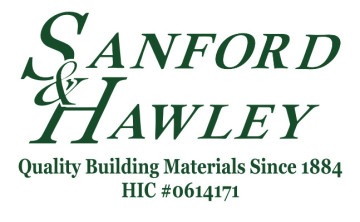
Choosing Caulks and Sealants
When choosing the right caulk and sealants for your next job, it’s important to take into account a product’s specific qualities: flexibility, adhesion, paintability and service life. Selecting the wrong product for the application can cost you in production time and callbacks.
Preliminary Considerations
Indoor vs. Outdoor Use?
Some sealants are designed for indoor use and others for outdoor use. Your tube of sealant should be clearly labeled to assure you of area usage.
Temperature?
Make sure to consider what elements the sealant will be exposed to. Some sealants can withstand extreme temperatures, but others can not.
Moisture Levels?
Keep in mind that not all sealants are designed to withstand high moisture areas.
Ease of use?
As some sealants are easier to apply than others, choose a sealant that you feel comfortable working with.
Types of Caulks and Sealants
Silicone Caulk
Pros: Silicone caulk is the most commonly used form of caulk. It’s great for filling in cracks around doors and windows and useful on non-pours surfaces, including metal and plastic. Silicone caulk can withstand extreme temperatures and temperature changes, so it rarely cracks or breaks.
Cons: Silicone caulk can be difficult to apply and does have an offensive odor.
Latex Caulk
Pros: Latex caulk can last up to 20 years and is paintable, which makes it perfect for indoor use. Latex caulk can be used to fill in small gaps like those found in wood siding, door frames and window frames.
Cons: Latex caulk does not withstand extreme temperature changes well.
Acrylic Latex Silicone Blend Caulk
Pros: The best of both worlds; this hybrid sealant spreads easily, withstands extreme temperatures and can be painted to match certain colors.
Kitchen and Bath Caulk
Pros: Kitchen and bath caulk is designed to withstand high moisture areas which makes it resistant to mold and mildew. Excellent for sealing bathtubs, sinks, toilets, etc.
Butyl Rubber Caulk
Pros: Butyl rubber caulk is excellent for filling wide gaps and cracks. It can be used to fill gaps up to ¼“ wide. It can also be used to fill in gaps in some stone, brick and concrete applications.
Oil-Based Asphalt Caulk
Pros: Oil-based asphalt caulk is the most heavy-duty caulk available. It can be used in chimney repairs, flashing and outdoor venting applications.
Cons: Use caution when working with oil-based asphalt caulk as it is very thick, and dries quickly.
Caulking Cord
Pros: Caulking cord is a quick and mess-free way to seal air conditioners, windows, doors and other small gaps.
Cons: Caulking cord is only a temporary sealant fix for small jobs.
Need help choosing caulks and sealants for your next project? Call or email your local building center today!
